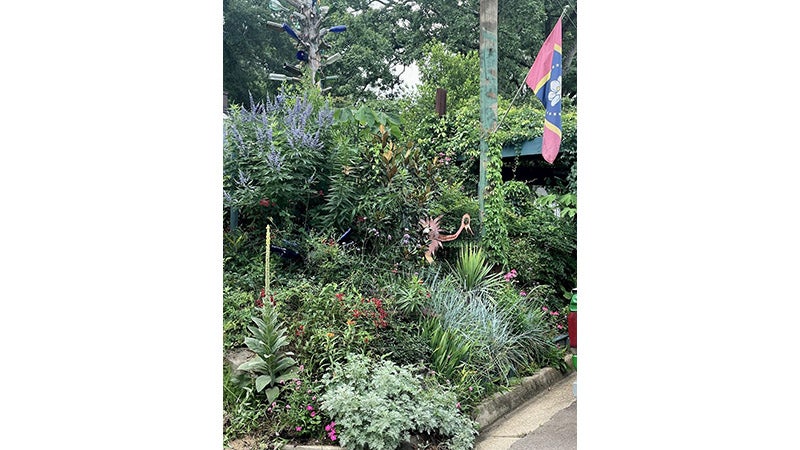Gardens should work for us, not make us work for them
Published 12:30 pm Sunday, June 27, 2021
|
Getting your Trinity Audio player ready...
|
This heat is one thing, but I stopped searching my thesaurus for synonyms for insufferable humidity when, right after “suffocating” I got to “thick enough to lick.” Between the two, for all our garden rewards and glories, gardening is not enjoyable when just dragging a hose wrings out buckets of perspiration, and standing still invites hordes of mosquitoes.
There’s no good escape for these, so we need simply workarounds. Especially we older gardeners who remember suffering from tossing and turning under an attic fan drawing cloying clouds of gardenia fragrance over us all night.
One way to give misery the slip is by digging, planting, watering, weeding, and other necessary chores early in the morning. This frees us up to enjoy the fruits of our labor in the evening from the vantage of a porch swing, hoping for a breeze as the cicadas start to serenade one another.
Me, I cheat. For the past dozen or so summers I’ve managed to slip away, hiding out in a small terrace herb garden in northern England where people freak out when it gets hot; one newspaper warned that a spate of 85 degrees was a “killer heat wave.”
Don’t get me wrong, I love spending quality time in my overstuffed Jackson cottage garden; but because I travel for work, often gone for weeks and months at a time, I’ve spent two decades redesigning and planting my landscape to all but take care of itself. And to be honest, I’m not really a nurturing kind of gardener.
So when it comes to getting plants to grow well with less care, there are only a few things all old-hand gardeners agree on. Sun or shade is a big consideration, but long-term success with even the most durable yard plants depends mostly on two factors: choosing sturdy, adapted plants to begin with, and planting them in a way that trains their roots to grow deep and strong so they can support top-growth with little or no extra help.
A big ego-deflating step for me was replacing favorite, alluring but borderline beauties with more durable plants. While I love finding and trying new things, lately I’ve started to hold back, and watching how untested newbies fare in the gardens of better gardeners before adding them to my own.
Now my garden’s backbone plants are the dependable mainstays we see in low maintenance older neighborhoods, rural or cottage gardens, and even in cemeteries. Some are pooh-poohed as old fashioned by opinionated fashionistas, others may be a bit invasive or have relatively minor pest problems. But, due to both nostalgia and endurance, many tried and true older plants are making come-backs in Southern gardens.
By the way I have an updated list of these durable heat- and drought-tolerant summer performers; shoot me an email via my blog and I’ll send it to you.
Still, no matter how dependable a plant may be, it will be doomed if the soil is over-prepared, over-watered, and over-fertilized; all three cause root problems that weaken even very hardy plants that don’t require it. So for decades now I’ve made it my habit to dig wide holes or beds, adding only a little organic matter to the native dirt so roots get used to growing into what’s outside the holes. I then cover the ground with leaf or bark mulch to keep it cool and moist, and water deeply but not often. This up-front preparation and “lean and mean” maintenance actually work better than constant coddling.
I think gardens should work for us, not make us work for them. Care to join me?
Felder Rushing is a Mississippi author, columnist, and host of the “Gestalt Gardener” on MPB Think Radio. Email gardening questions to rushingfelder@yahoo.com.






